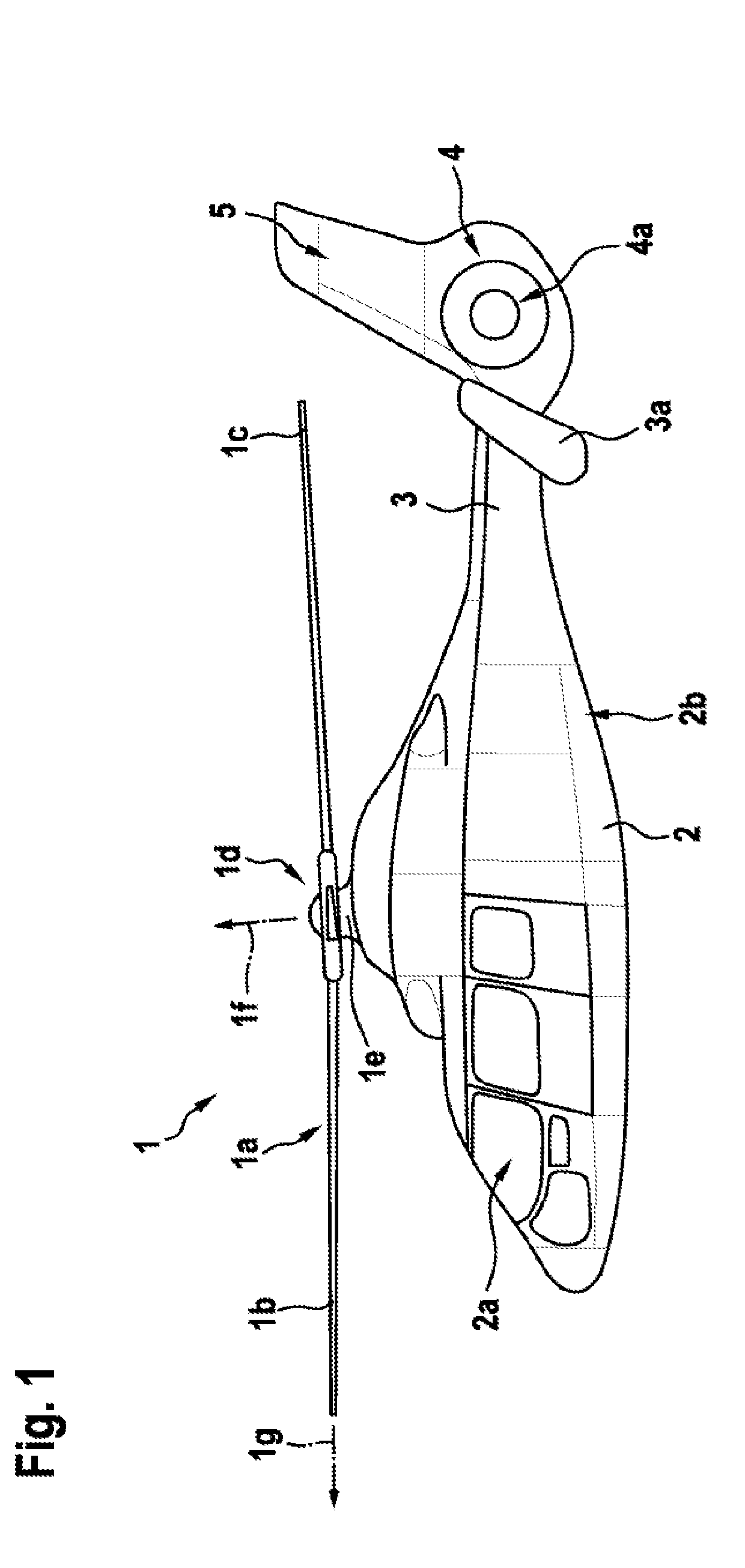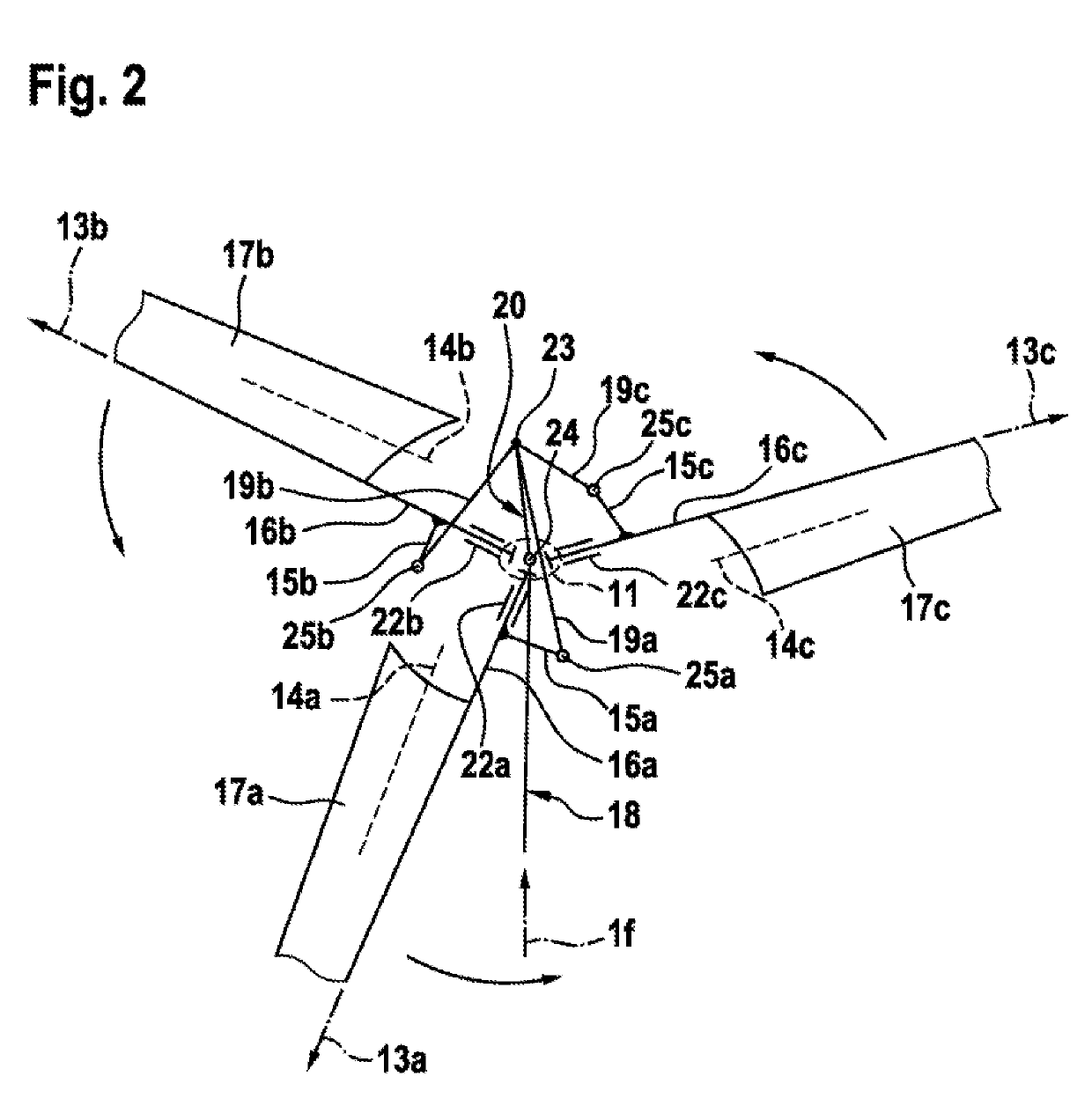Passive pitch angle adjustment apparatus
a technology of pitch adjustment and apparatus, which is applied in the direction of rotors, aircrafts, vehicles, etc., can solve the problems of unbalanced lift at the different rotor blades, vibratory stresses on the rotor blades, and requires complex, heavy, and cost-intensive pitch adjustment devices, so as to reduce the bending moments, reduce the cost of purchase and maintenance, and increase the efficiency of the rotor system
- Summary
- Abstract
- Description
- Claims
- Application Information
AI Technical Summary
Benefits of technology
Problems solved by technology
Method used
Image
Examples
Embodiment Construction
[0039]Exemplary embodiments may be included with any rotor or propeller having at least two rotor blades. For example, embodiments may be included in a rotor or a propeller of a transportation vehicle, if desired. FIG. 1 shows an example of a transportation vehicle. A transportation vehicle may be an airplane, a quadcopter, a helicopter, or any other rotary wing transportation vehicle. As shown in FIG. 1, the transportation vehicle may be a rotorcraft 1 that is exemplarily illustrated as a helicopter. Thus, for purposes of simplicity and clarity, the rotorcraft 1 is hereinafter referred to as the “helicopter”1.
[0040]Illustratively, helicopter 1 may have a fuselage 2 that forms an airframe of the helicopter 1. The fuselage 2 is connected to a suitable landing gear and exemplarily forms a cabin 2a and a rear fuselage 2b. The rear fuselage 2b is connected to a tail boom 3.
[0041]Illustratively, helicopter 1 may have at least one multi-blade rotor 1a for providing lift and forward or bac...
PUM
 Login to View More
Login to View More Abstract
Description
Claims
Application Information
 Login to View More
Login to View More - R&D
- Intellectual Property
- Life Sciences
- Materials
- Tech Scout
- Unparalleled Data Quality
- Higher Quality Content
- 60% Fewer Hallucinations
Browse by: Latest US Patents, China's latest patents, Technical Efficacy Thesaurus, Application Domain, Technology Topic, Popular Technical Reports.
© 2025 PatSnap. All rights reserved.Legal|Privacy policy|Modern Slavery Act Transparency Statement|Sitemap|About US| Contact US: help@patsnap.com



